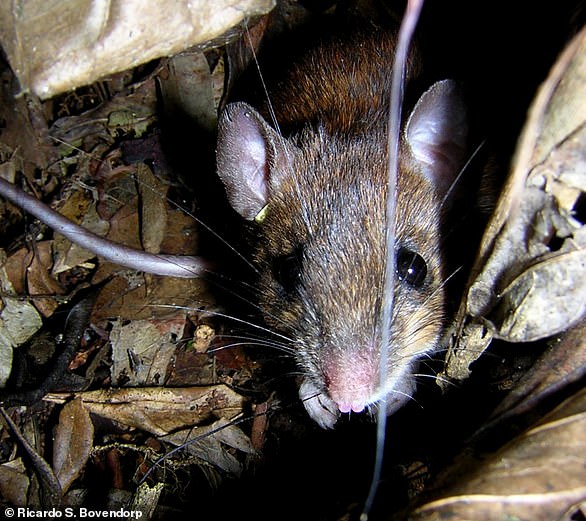Carbon offsets are a waste of time: Scientists say tree-planting plans favored by celebrities as an excuse to fly are actually harming nature
- Celebrities often use compensation to neutralize the gases emitted by flying private jets
- But planting trees in large-scale projects to ‘compensate’ for CO2 emissions harms nature
Planting trees in large-scale projects to ‘offset’ carbon emissions is damaging nature, a new study from Oxford claims.
Celebrities and tycoons including Prince Harry and Meghan Markle, Elton John, Emma Watson and Amazon founder Jeff Bezos have all said they have used offsets to neutralize the greenhouse gases emitted by activities such as flying in private jets.
But if compensation involves planting large numbers of a single tree species, this could actually harm the environment, the authors say.
Single-species plantations harm biodiversity and put forests at greater risk of fire, it is argued, while doing little to suck up greenhouse gases.
Instead, the authors say we should prioritize preserving and restoring intact ecosystems.
Planting trees in large-scale projects to ‘offset’ carbon emissions is harming nature, a new Oxford study claims
In the journal Trends in Ecology and Evolution, scientists from the University of Oxford’s Environmental Change Institute write that the focus on offsetting carbon at all costs is harming other aspects of the ecosystem.
Report author Dr Jesús Aguirre-Gutiérrez said: ‘Despite the wide range of ecosystem functions and services provided by tropical ecosystems, society has reduced the value of these ecosystems to just one metric: carbon.
‘Current and new policies should not promote ecosystem degradation through tree plantations with a narrow vision of carbon capture.’
Although some projects reforest degraded land, most involve what is known as afforestation: the planting of forests in non-degraded and previously unforested areas such as grasslands.
Tropical ecosystems are highly biodiverse and provide multiple ecosystem services, such as maintaining water quality, soil health and pollination.
By comparison, carbon-capture plantations are mostly monocultures and dominated by just five tree species: teak, mahogany, cedar, silk oak and black wattle, which are grown for timber, pulp or agroforestry.
The result is that these plantations tend to support lower levels of biodiversity.
For example, in the Brazilian Cerrado savanna, a 40 percent increase in wood cover reduced plant and ant diversity by about 30 percent.
In fact, tropical grasslands and savannas are already carbon sinks and, unlike trees, are less sensitive to disturbances such as drought and fire.
These plantations can also directly affect ecosystems by reducing streamflow, depleting groundwater and acidifying soils.
Dr. Aguirre-Gutiérrez said, “The current trend of carbon-targeted tree planting” creates monocultures for “little carbon gain.”
He added: ‘An area equal to the total surface area of the United States, Britain, China and Russia would have to be forested to sequester one year’s worth of emissions.’

